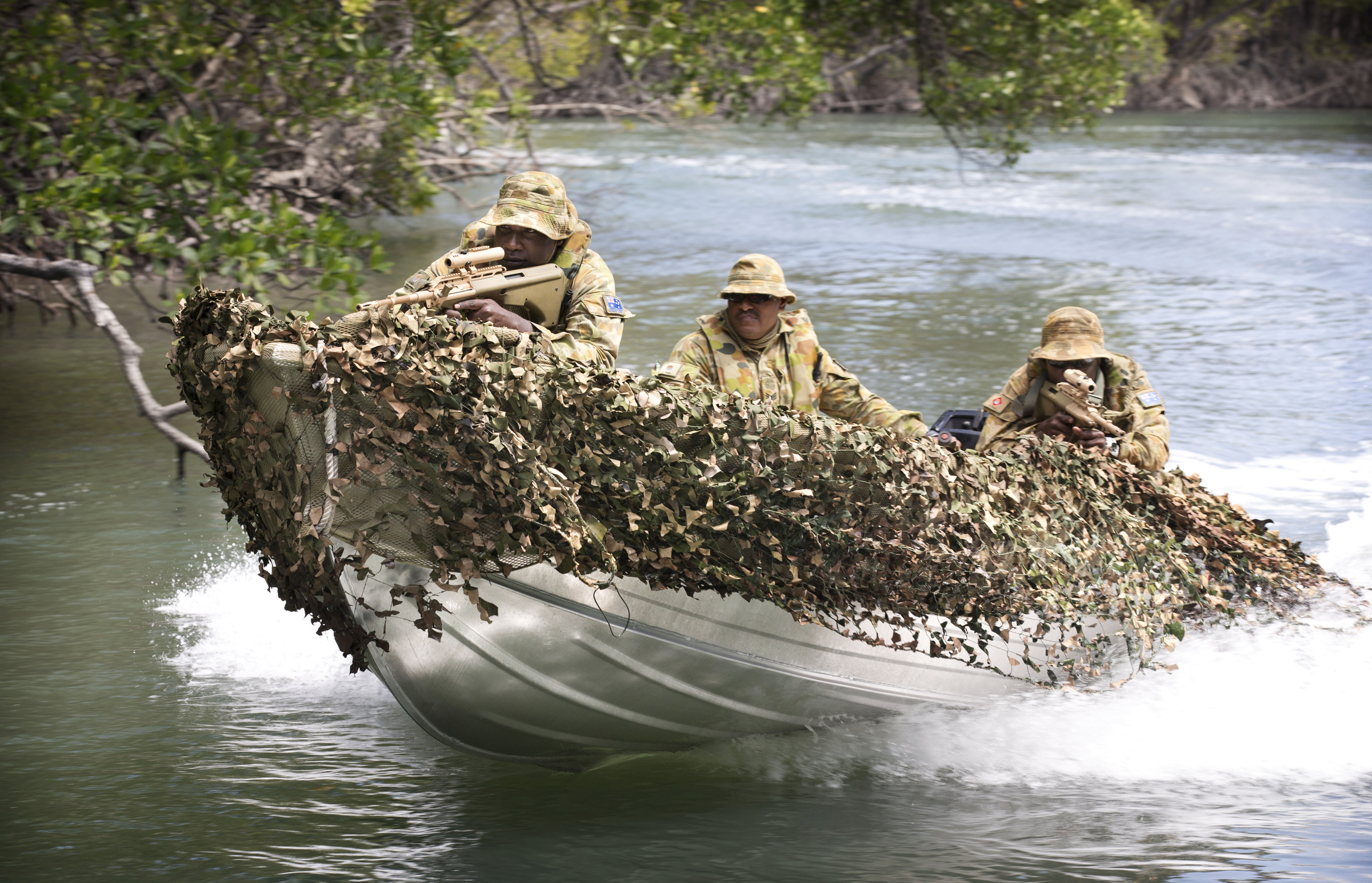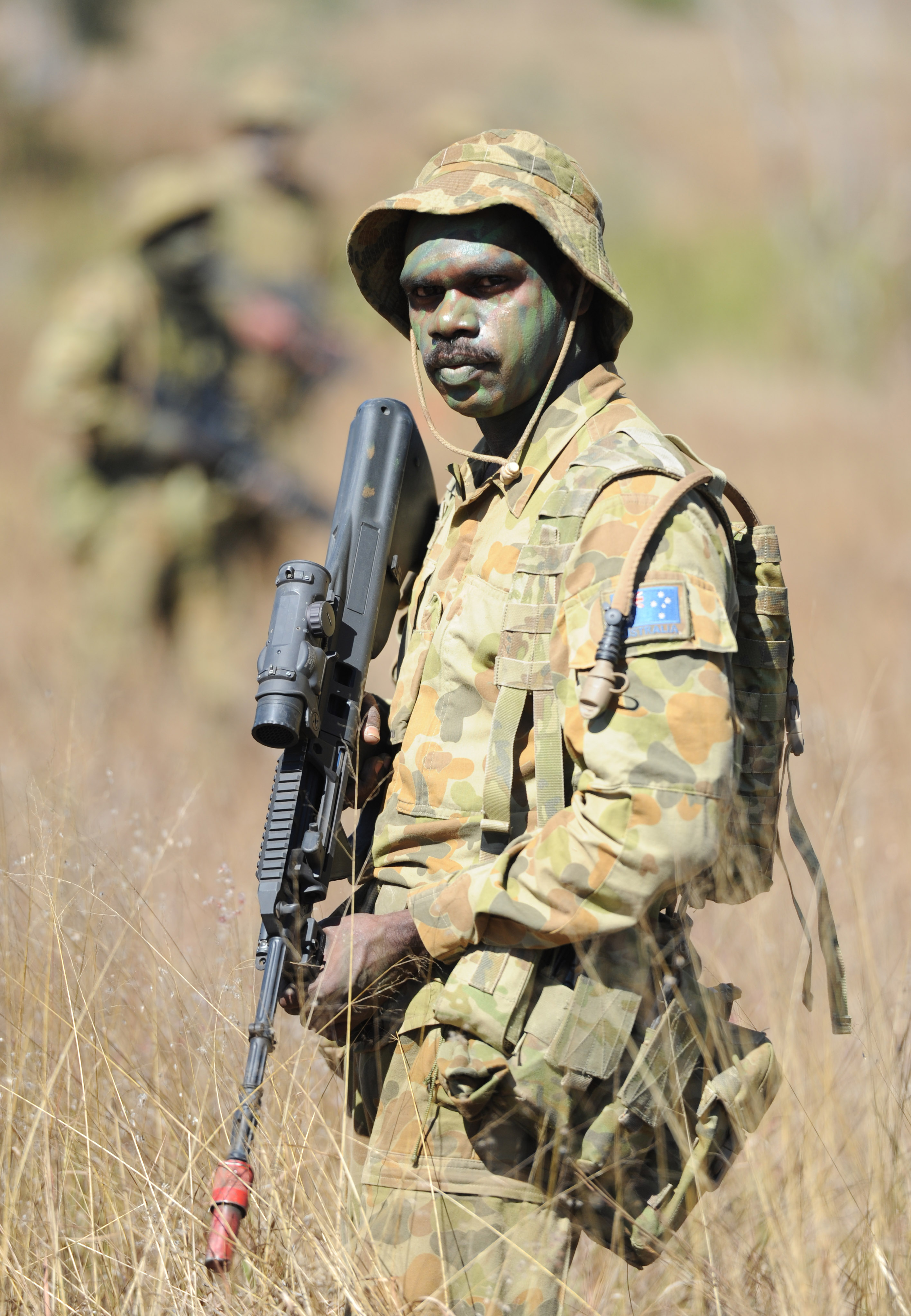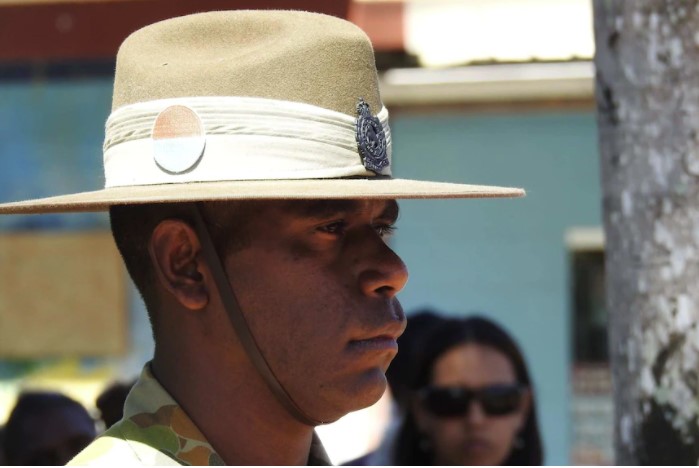The value of diversity knows no bounds. Broadly speaking within Defence, diversity reflects the variety of personal experience that arises from differences in culture and circumstance. It can include characteristics such as cultural background, ethnicity, age, gender, gender identity, disability, sexual orientation, religious belief, language and education. In order to be diverse we need to recognise and understand that true inclusiveness does not mean treating everyone exactly the same. An inclusive culture means fostering a work environment where individual differences are valued and utilised. It allows us to leverage the unique knowledge and experience of our people and their experiences to overall enhance our capability. That means we need to be consider diversity in a broader context than the labels we have assigned to it. Diversity is the product of an approach that allows us to deliver the best results. Through diversity we gain the varied perspectives needed to achieved the tasks we have been assigned.
So, is the 51st Battalion, The Far North Queensland Regiment (51 FNQR) a diverse unit? Yes. What makes it one of Army’s most diverse units? If we consider just the labels listed above in the abstract and quote Aboriginal and Torres Strait Islanders (ATSI) numbers within the unit then it would be a very diverse unit. In addition to those who serve within the battalion, the unit's Area of Operations (AO) contains in excess of seventy unique aboriginal groups, the Torres Straits islanders and Papua New Guineans who have the ability to move freely within certain parts of our AO under trade agreements.
51 FNQR is a Regional Force Surveillance Unit (RFSU). It is tasked to provide situational awareness and understanding on prescribed threats to Australia and operates predominantly in the remote areas of the far north of Queensland[1]. Due to the unique nature of the population and demographics throughout our AO, special provisions have been made for RFSU personnel. While some RFSU members cannot meet the normal Reserve General Service Officer (GSO) or General Entry (GE) conditions of entry and service, they are otherwise suited to the role and tasks which are tethered to Australia and trained within the unit from cradle to grave. As a result, these members can be appointed or enlisted under special conditions into the Regional Forces Surveillance list (RFSL) or as Local Observer Elements (LOE)within any of the RFSUs.

The requirements and means by which we are able to achieve diversity as an Army varies between units but most fundamentally it is the requirement to not only appreciate what makes a person or group of people different from ‘the norm' but also identify the potential in these differences. Once you have achieved that understanding, there is a need for Defence to have the policy which allows you to recruit and train them if they, as is the case with 51 FNQR, come from a greatly different background to what is considered normal in main stream Australia. For 51 FNQR, the policy is contained largely within the Army Standing Instructions and the specific-to-Regional-Force-Surveillance-Group (RFSG) employment category number (ECN) 305 in the Manual for Army Employment.
We don’t have all the answers but we do have the framework. The existing policy allows an RFSU Commanding Officer (CO) within the scope of their delegation, to recruit and train an RFSL workforce. The CO of an RFSU is required in the first instance to have an understanding of the value Indigenous Australians bring to the unit and Army. The CO then needs to understand the intent behind the policy (not just the text contained within it) and develop tailored approaches to the recruitment, training and retention of these Australians who live and were raised in a very different environment and circumstance, which may vary from community to community, and as such accept a higher degree of risk. Even though the risk and ultimately the decision to recruit someone into the RFSL sits with the CO, his subordinate staff also need to understand the value, the policy and the intent behind in order for it to be a success.
Pick any statistic and Indigenous Australians fare worse than non-Indigenous Australians. 3% of the Australian population identify as ATSI, and over 65% of those live in regional, remote or very remote parts of Australia. Over 11% speak an Indigenous language at home as their primary means of communication. Over half are unemployed. One in five ATSI women will have experienced physical violence in the last year and they are three times more likely to experience sexual abuse than non-Indigenous Australians. Over 50% of ATSI Australians aged between 15 and 65 have been identified to have some form of disability. The life expectancy of ATSI people is approximately ten years less than that of non-Indigenous Australians. 28% of adult prisoners and 48% of juveniles in custody in Australia are Indigenous Australians[2].
These issues and others, coupled with the sedentary community life, manifest in the form of chronic mental illness, addiction and suicide. This has led to the slow degradation of the traditional expressions of masculinity like hunting or 'being on country'. This degradation has, in turn, suppressed the 'warrior and protector ethos' which still remains inherent but is not overtly evident largely due to the lack of opportunities to display these traits.
It is easy therefore to assume that people with the issues listed above don’t have the ability to serve within today's Army, let alone be trained to meet the standards required, given their start state. However that assumption would be wrong. Army is an organisation that quite correctly sets and maintains extremely high standards, especially in comparison to social norms from which it draws most of it workforce in mainstream Australia. RFSUs set and maintain the same, but in the context of the social norms from which they draw their work force and operate. Both however share the same end state. We need to recognise that Indigenous personnel are an important part of our organisation and history. They assist our workforce to grow and develop, ultimately enhancing our capability. The Indigenous soldiers within 51 FNQR and the Army bring a unique set of skills and experience in dealing with cross-cultural issues and a sense of belonging to “country” which melds strongly with our culture and core values as an Army but more specifically with 51 FNQR whose motto is 'Love Of Country Leads Me'. Because the Army depends on its ability to not only recruit but train, employ and retain soldiers from across the Australian population recruiting and retaining remote Indigenous soldiers assists the Army in moving towards being a more inclusive organisation. The organisational value of the Indigenous Australian soldiers within 51 FNQR is increased due to the geographical locations in which they live and have been raised, and their ability to provide access to geographical, geological and botanical information that can assist with operations on Australian soil and the defence of our borders. Further, in complex environments overseas our improved awareness of Indigenous Australian culture can enhance Army's capability to better understand other cultures, differing ethnic backgrounds and religions – a capability which is essential to support effective engagement with local populations overseas on operations or whilst providing humanitarian assistance.

The Army as a training organisation is up to the task and the Chief of Army is quoted as saying 'we are the best trainers in Australia'. RFSU soldiering is just as different to soldiering in the Sixth Battalion, Royal Australian Regiment (6 RAR) as soldiering in 6 RAR is different to soldering in First Combat Signals Regiment (1 CSR). The constant is the soldiers. The path that those soldiers from remote Indigenous communities take may not be as steep as others but the outcome is equivalent. Each soldier on the RFSL adheres to the Army values in the same manner as their General Enlistment (GE) counterparts. They all provide the service that they have been enlisted for.
What is different is the standards. Education, physical ability and intellectual ability have been discussed above. The differences that are less obvious are the aspects that differ in regards to the societies from which RFSU soldiers are drawn.
Remote Indigenous communities are, in some cases, very violent and patriarchal and may place a different value on gender roles than mainstream Australia. It can be said that 'the pathway way to change' in some remote Indigenous communities is only a footpad at best, and that this needs to be acknowledged. If the education levels and health of those living within remote Indigenous communities is acknowledged as being in some cases decades behind that of the rest of mainstream Australia it shouldn’t be difficult to acknowledge that their perceptions of gender equality and male dominance, for example, may also to be decades behind that of mainstream Australia. As a result in some circumstances there is a requirement for the staff involved with the instruction of these men and women to display a degree of dominance and authority. 51 FNQR has found young Indigenous men in particular respond to more positively to this approach, primarily as a result of the environment they come from and the value they place on the warrior and, as we like to espouse, the 'protector'. This approach gives us the opportunity to have a positive influence over these soldiers and communities, inculcate the Army values, and instil within them a degree of pride. These soldiers have become role models for a new generation. They are living examples of workforce participation, healthier lifestyles and are involved in the protection of 'country'. The evidence of these values are not only witnessed through their service within the RFSUs and on Border Protection Operations but within their communities. The Chief Executive Officer (CEO) of the Wujul Wujul community Mrs Eileen Deemal-Hall attributes the recent reduction in public nuisance rates in the Wujul Wujul community by 61% and domestic violence by 30%, to the sense of self pride they achieve from being members of 51 FNQR, 'We’ve got that confidence, plus we’ve got family there from 51st Battalion, they’ve got our back'[3].
The work and success that 51 FNQR has had cannot be solely attributed to the unit alone and neither can all the benefits. Prior to the commencement of the training of these soldiers, and run at times concurrently with the recruitment and screening, 51 FNQR assists a civilian organisation made up of predominantly ex-military veterans called 'Kapani' who run the 'Kapani warrior program' within remote Indigenous communities. The program itself uses simulated military training to instil leadership, teamwork and initiative in the young men who take part, and can be considered a pre-recruit conditioning course. Successful completion of the Kapani warrior program in addition to the training 51 FNQR provides has had positive outcomes for Other Government Agencies (OGAs) and Non-Government Agencies (NGOs). Local State Emergency Services have seen an increase in membership due to the trainees' and soldiers' desire to fulfil that protector role and contribute to community. Those who have received skills within Army that are transferable are now able to work within medical clinics and drive ambulances. The pay drawn from military service is able to be re-invested in the community. All of these positive outcomes assist with the Federal Governments initiatives to 'close the gap'.

ABC / Private Clayton Baird is Wujal Wujal's first Indigenous recruit since his great great-grandfather, Norman Baird.
So that’s the 'living diversity' aspect in the context of 51 FNQR, but what about the leadership. First, it is harder to quantify but not hard to achieve. Each of the men and women within 51 FNQR have developed their own means of displaying leadership within the context defined above. What is at the core of each individual's style, if they are to be described as successful, is the fact they have seen the value these Indigenous soldiers offer the unit, the Army and the nation. Whether it is the GE patrolman who has spent two wet weeks in an observation post on OPERATION RESOLUTE with a soldier enlisted into the RFSL completing the exact same task they are, or the more senior members of the unit who have the privilege of knowing and seeing first hand that the same soldier is making a contribution to his or her community and proving to be a positive role model to the younger generations. Yes recruiting Indigenous Australians assists in making the Army a more diverse and inclusive organisation but that, in my opinion, is just a second order effect. Is 51 FNQR a diverse unit? No. It is a unit made up of officers and soldiers who all provide the same capability relevant to their positions who are led to do this through the love of country.










I came across your article by chance when I was trying to find information of the Regional Force Surveillance Group last night. I am ex 51 FNQR of PNG descent but spent my teenage years in country NSW. I enlisted as a General Entry Army Reservists where I was trained as a fully qualified OISR now called Combat Systems Operator/cross trained as Clerk Admin also. The Army Reserves was the best thing that ever happened to me. I completed two CFTS in Army Reserve Career management and ended up working for Defence as an APS. Your article described what an RFSU does especially 51 because I was able to share these with other ADF females in particular who have never been to Northern Australia let alone know what an RFSU is. You mentioned RFSL and LOE too.
I shared this on various Facebook veterans groups because I also fly to the DVA Female Forums as an Indigenous female specifically as one from the RFSU environment. One of my concerns are with Indigenous Health in regards particularly to those two types of reservists that only serve in an RFSU environment. I liaise with top gun Advocates about some of these health issues one of them is Tuberculosis. I am also an LOE SGT I come under SERCAT 2. I was medically downgraded from the Active Army Reserves and relisted on promotion as an LOE CPL due to my previous military history at NORFORCE. OP Outreach broke out in September 2007 til the end of 31 Dec 2008. The new CO in hindsight retained me for my skill set he needed as many hands on deck in the administration side. This was in 2008 then in 2016 the ADF wants to retain those members such as myself to be utilised on an emergency call out under their ADF Total Workforce Model that was implemented in late 2016. Happy to be retained for the RFSUs I did my time.
Excuse the typos but thank you. Great article.
Regards
Wendy